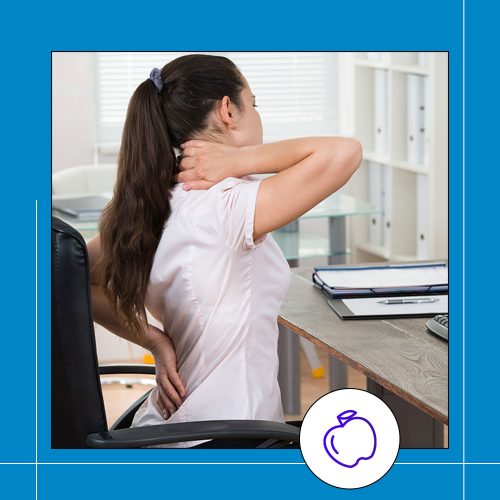Chances are if you work a desk job you already know how bad sitting down all day is for your health.
A pretty important problem was brought up recently by the American Heart Association in the 2016 Circulation Circulation journal.
Fourteen cardiovascular-health experts from around the country convened and reviewed all the relevant research about the health effects of physical activity. While the panel did support the recommendation of 150-minutes of physical activity per week, it made a more important point: it isn’t the time we spend exercising, but the time we spend not moving at all that’s the real problem.
You can go for a thirty-minute run three times a week but your 40 hour a week sedentary desk job is still waiting for you the next day.
It’s like saying ‘I’m going to eat this salad but still smoke cigarettes’. You’re making a better health choice at that moment, but you’re still ignoring the underlying problem.
A study published in the National Cancer Institute assessed the activity levels of more than 2,000 adults. They were found to spend, on average, just over 5 hours a day in a chair, and for each hour that they weren’t standing, the levels of artery deposits in their blood vessels increased by 14 per cent. Most alarmingly, any improvement in fitness due to time at the gym was almost completely negated by staying still for a few hours.
They were simply becoming ‘active couch potatoes’.
The fact of the matter is we simply need to get active during our workday. Not just after it. Active seating is one solution to do just that.
What is active seating you ask and why should I care?
Active seating is a type of seating that allows you to move around whilst remaining in a seated position.
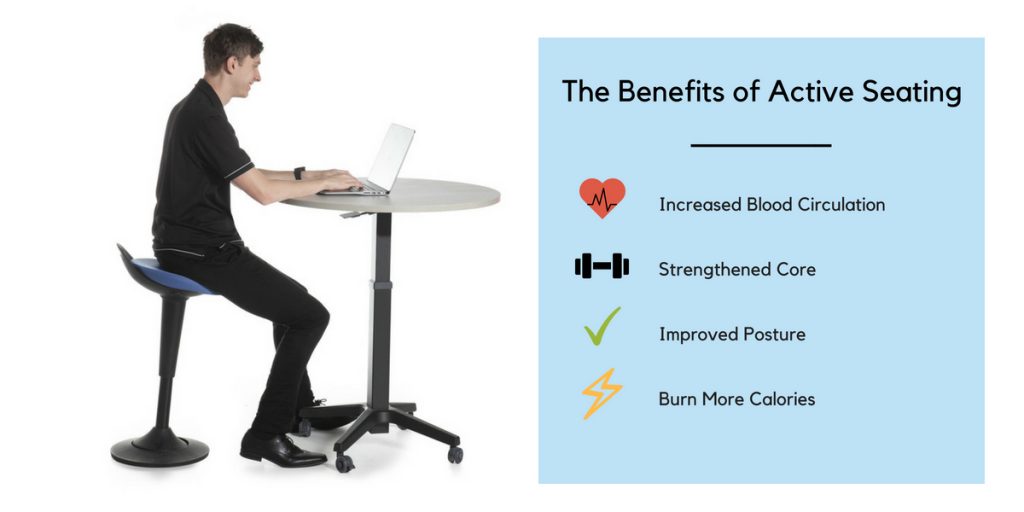
The Benefits of Moving As You Sit
Increased blood circulation: Your body is built to move. Active seating encourages movement, even slight movement encourages your blood to pump around your body and lubricate your joints.
Strengthened core: Active chairs encourage you to engage your core muscles. Stools that allow you to wobble from side to side and back and forth can work your abdominal muscles (wobble your way to a six-pack!).
Improved posture: Active seating helps you be more aware of your posture and refrain from slumping. The more you realise your slumping, the more your body automatically corrects your posture, making a good habit both inside and outside of work.
Burning calories: Constant repetitive movement, no matter how big or small uses more energy than simply sitting still. By sitting up straighter, moving around and working your core muscles you’re more likely to burn a few more calories than you would while sitting.
Different Ways You Can Use Active Seating
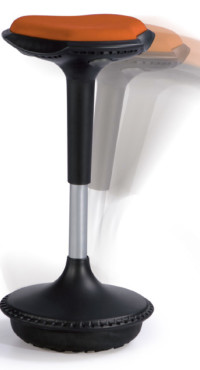
Balancing
Active seating that encourages you to be mindful of your balance and posture is a great alternative to a traditional chair. Look for seating options with a rounded bottom. One affordable active seating option is our Suno Stool which features a weighted rounded base that encourages you to balance whilst using it.
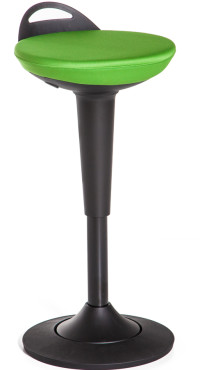
Leaning
A stool with a stable base rather than a rounded one is great for leaning. It’s a minimally active working position but does require a little work to stay upright. Leaning stools with a back also offer a bit more support.
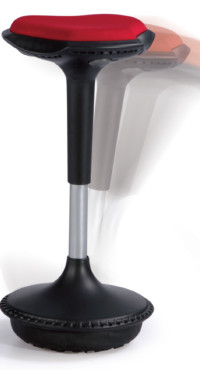
Wobbling
Active chairs that encourage wobbling actively engage your core muscles, hips, and leg muscles in order to stay in the middle of the chairs natural wobbling range. A rounded base also allows for gentle rocking back and forth or side to side.
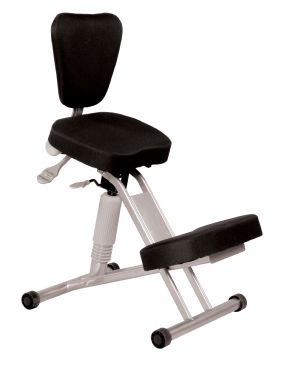
Kneeling
Kneeling chairs divide the weight of your body between your buttocks and your shins. By opening the angle between your torso and your legs, it encourages you to squeeze your glutes and remain upright. Kneeling chairs such as this offer a range of adjustment from the seat height, tilt angle and shin cushion height.
Top Tip
Like with making the transition to a standing desk, switching to active seating can be a gradual process. Build up to using your active seat for an hour at a time. If you need a break, experience any aches or pains, make sure you listen to your body.
Before we go we’d like to leave you with 3 things you should consider before buying an active seat:
1. Is it height adjustable enough to switch from sitting to standing or even leaning?
2. Is it lightweight enough to move around to different areas?
3. Will it improve my posture and strengthen my core?
We understand that there are barriers to incorporating a regular exercise routine into your busy 9-5 work week, especially if you have a family to get home to. In past blogs we’ve told you about the Benefits of Standing Desks and How to Stay Active During Your Work Day. Maybe you already have a standing desk or maybe you regularly go to the gym three times a week.
Great! You’re on the right track to making a better commitment to your long-term health.
It’s clear that there is a lot more everyone can be doing to make sure they get more activity into their workday.
Even if you fit some regular exercise into your work week, clearly it’s not enough to undo all the negative affects sitting all day has on your health. So, if switching to active seating and using a standing desk sounds like something you would like to try, don’t hesitate to make the switch.


